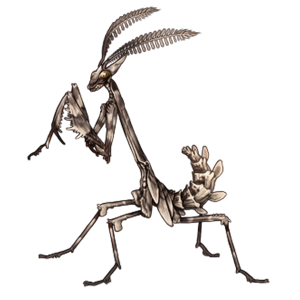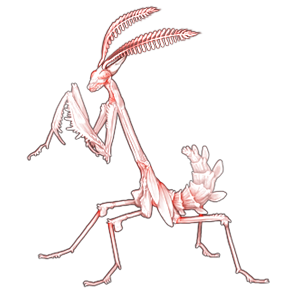Empusa fasciata ()
About
This species sports a unique look, thanks to their vivid colours and the characteristic horn-like structures found on their head. On the bottom side of the abdomen, these mantids have developed uniquely shaped chitin outgrowths that, along with their body colours and perfect stillness, allow them to blend in with flowers. Nymphs are usually pink to blend in with Fumaria flowers.
Unlike many other mantid species, these insects are not known to have a tendency for cannibalism. In fact, males die shortly after copulation, while females die right after laying eggs on vegetation. To avoid potential cannibalism, males are active during both day and night, while females hunt mostly during the daytime. Males can even evade bats during night flights by detecting the ultrasounds that bats utilise for echolocation.
Empusa fasciata can be considered an exceptional predator, ambushing flying insects that visit nearby flowers, such as bees and flies. Their reflex is faster than the blink of an eye, and once their prey has been grasped, their chances of escaping are very low.
This species inhabits xerothermic grasslands and is distributed from western parts of Asia to the very coasts of Italy and the Balkans.

| Colors | (click to preview) |
|---|---|
     |
|